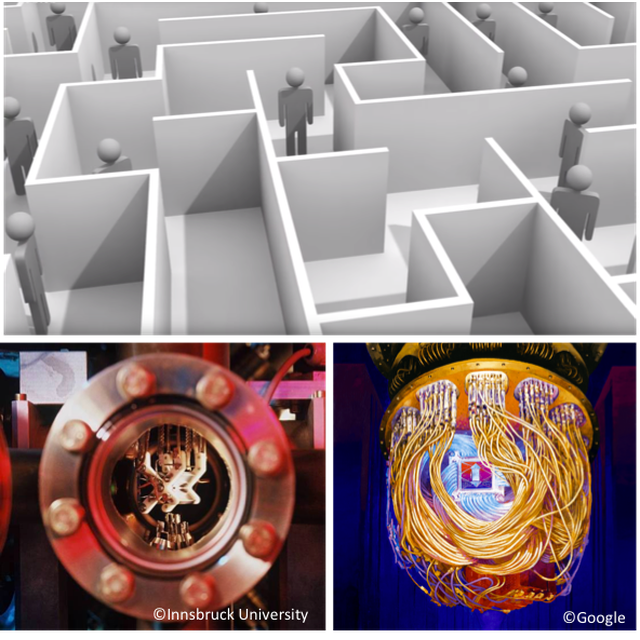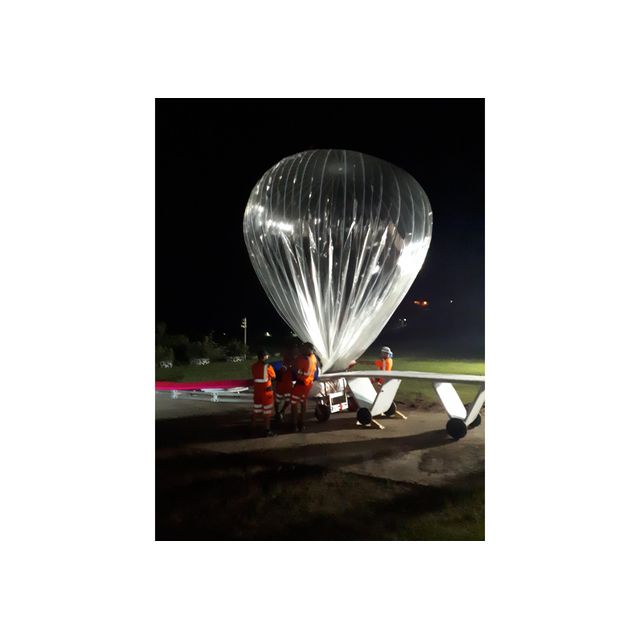
Séminaires

(en anglais) The emergence of quantum computing: principles, implementations, challenges
Centre de nanosciences et de nanotechnologies, Amphithéâtre, PalaiseauSéminaires
In this presentation, I will give a general introduction to the field of quantum computing.
Quantum computing emerges from the idea that one could exploit the most subtle concepts of quantum mechanics, such as quantum superposition and entanglement, to provide an extraordinary speed-up of computational power.
Recently, these concepts have started to emerge in the laboratories, with the first quantum computing machines being developed using various platforms: superconducting quantum bits, trapped ions, photons, Rydberg atoms, etc.
I will explain the basic working principles of a quantum computer, its figures of merits, and the main scientific and technological challenges that the various approaches are facing to develop a scalable technology.
Pascale Senellart is a senior CNRS researcher at Center for Nanoscience and Nanotechnology. Her team develops building blocks for the optical quantum computer based on semiconductor devices. She is co-founder of the start-up company Quandela. Within University Paris Saclay, she is in charge of coordinating Quantum Sciences and Technologies.
External visitors should be register beforehand

(en anglais) Wind as a source of energy
Centre de nanosciences et de nanotechnologies, Amphithéâtre, PalaiseauSéminaires
On this a broad topic, I have picked three sets of questions to which I will bring some elements of answer:
How does a wind turbine work? Why do they look the way they do? Can they really extract energy although the blades occupy so little space? Why are they white? Many elements of answer to these questions may be obtained based on simple considerations from aerodynamics. A brief review of their history will be given, emphasizing the timescales of the research and development involved, and the factors that led to the success of the 'Danish concept'.
How much can we forecast wind? It often rains when I plan a picnic: have weather forecasts ever improved? On what timescale is it possible to make forecasts - can anything be said beyond a week? This will be an opportunity to discuss some of the research activities at the Laboratoire de Météorologie Dynamique. One aim is to explore methods providing information (necessarily probabilistic) for renewable energies on timescales from 2 weeks to a season.
Is it worth developing wind energy? What are the motivations? Can it provide a non-negligible part of our electricity supply? Is it really urgent? Some key numbers regarding climate change, green house gas emissions and renewable energies will be recalled, drawing on reports from the IPCC and from the IEA (Intergovernmental Panel on Climate Change, and International Energy Agency, respectively). This last part may be followed by a small debate if time allows.
Riwal Plougonven is Professor at Ecole Polytechnique since 2012, in the Mechanics Department. Since 2016 he is deputy director of the Laboratoire de Météorologie Dynamique. His research has evolved into two main domains: the study of dynamical processes in the upper-troposphere and lower-stratosphere using balloon observations, and the forecasting of the atmospheric state for the energy applications.
External visitors should be register beforehand